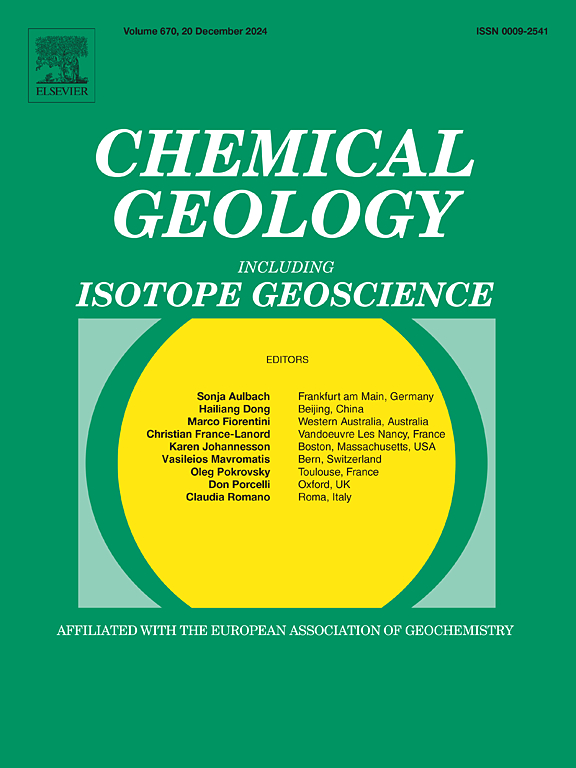Removal of arsenate from aqueous solutions by transformation of cerussite to mimetite
IF 3.6
2区 地球科学
Q1 GEOCHEMISTRY & GEOPHYSICS
引用次数: 0
Abstract
Water pollution by arsenic is a growing concern due to its toxicity and health effects, prompting research on its immobilization. A novel method for removing arsenate ions from water using synthetic or natural cerussite powder (PbCO3) is proposed. Laboratory experiments over three months at pH 2–8 show that in the presence of chloride ions, cerussite transforms into Pb(AsO4)3Cl (mimetite), and in their absence, into Pb(AsO4)3OH.
Arsenate is removed as lead carbonate dissolves and mimetite precipitates, achieving a removal efficiency of 57–99.9 %. Repeated treatments can enhance this efficiency to over 99 %, with the cerussite powder being reusable. Atomic Force Microscopy experiments show that mimetite formation is surface-controlled, and cerussite reacts with arsenate through a dissolution-precipitation mechanism, partially armouring the cerussite surface.
Repeating the experiments with cerussite in the presence of other cations (Mn, Fe, Ni, Cu, Zn, Cd, Al) or anions (CO32−, SO42−, PO43−, F−) showed that their presence has no significant effect on the progress and efficiency of the process. Only Al may slightly reduce the effectiveness. Reaction with solutions with an initial concentration of 5 mg As/L resulted in a 99.9 % reduction in As content. Similar observations were noted in experiments using natural arsenic-enriched waters (∼0.1 mg As/L), though the reaction proceeded more slowly, requiring additional time for arsenate removal to reach completion. These findings suggest that cerussite removes arsenate from water by gradually being replaced with mimetite crystals. While challenges remain in optimizing this method, it has the potential to become a novel technology for arsenic-contaminated water remediation.

求助全文
约1分钟内获得全文
求助全文
来源期刊

Chemical Geology
地学-地球化学与地球物理
CiteScore
7.20
自引率
10.30%
发文量
374
审稿时长
3.6 months
期刊介绍:
Chemical Geology is an international journal that publishes original research papers on isotopic and elemental geochemistry, geochronology and cosmochemistry.
The Journal focuses on chemical processes in igneous, metamorphic, and sedimentary petrology, low- and high-temperature aqueous solutions, biogeochemistry, the environment and cosmochemistry.
Papers that are field, experimentally, or computationally based are appropriate if they are of broad international interest. The Journal generally does not publish papers that are primarily of regional or local interest, or which are primarily focused on remediation and applied geochemistry.
The Journal also welcomes innovative papers dealing with significant analytical advances that are of wide interest in the community and extend significantly beyond the scope of what would be included in the methods section of a standard research paper.
 求助内容:
求助内容: 应助结果提醒方式:
应助结果提醒方式:


